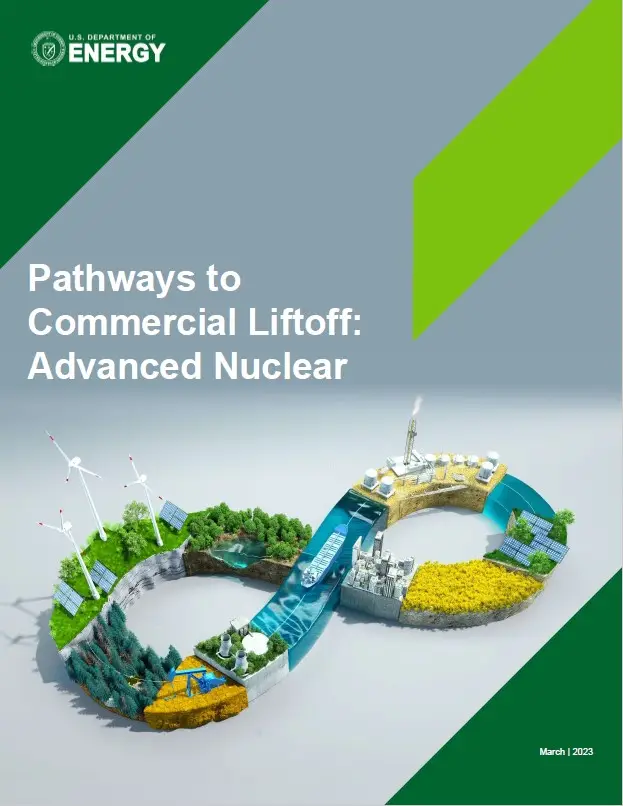This is an excerpt from the executive summary of a report, “Pathways to Commercial Liftoff: Advanced Nuclear,” prepared as an account of work sponsored by the U.S. Department of Energy. This report shows the huge potential nuclear energy has within the near future.
“These Pathways to Commercial Liftoff reports aim to establish a common fact base and ongoing dialogue with the private sector around the path to commercial liftoff for critical clean energy technologies. Their goal is to catalyze more rapid and coordinated action across the full technology value chain.
U.S. domestic nuclear capacity has the potential to scale from ~100 GW in 2023 to ~300 GW by 2050—driven by deployment of advanced nuclear technologies. Power system decarbonization modeling, regardless of level of renewables deployment, suggests that the U.S. will need ~550–770 GW of additional clean, firm capacity to reach net-zero; nuclear power is one of the few proven options that could deliver this at scale, while creating high-paying jobs with concentrated economic benefits for communities most impacted by the energy transition.
Advanced nuclear includes a range of proven and innovative technologies. There are two major categories of advanced nuclear reactors: Generation III+ (Gen III+) and Generation IV (Gen IV). Gen III+ reactors are similar to the conventional reactors operating in the U.S.—they use water as a coolant and low-enriched uranium (LEU) as fuel. Gen IV reactors will use novel fuels, e.g., high-assay, low-enriched uranium (HALEU), and coolants that have not been used by the conventional U.S. nuclear fleet; these technologies offer some advantages over water-cooled reactors, in particular for non-electric applications. Advanced nuclear is also generally grouped into three main size categories: large reactors (~1 GW), small modular reactors (~50-300 MW), and microreactors (50 MW or less). Small modular reactors (SMRs) can provide more certainty of hitting a predicted cost target and are likely to play an important role in the early scale-up of nuclear power; scaling the industry to a full 200 GW of new nuclear capacity may require large nuclear reactors as well.
Advanced nuclear provides a differentiated value proposition for a decarbonized grid. Nuclear energy generates carbon-free electricity, provides firm power that complements renewables, has low land-use requirements, and has lower transmission requirements than distributed or site-constrained generation sources. It also offers significant regional economic benefits, can aid in an equitable transition to a net-zero grid, and has a wide variety of use cases that enable grid flexibility and decarbonization beyond the grid.”
For a PDF of the complete “Nuclear Energy Potential” report, Click on this Link to the U.S. Department of Energy website. The PDF download link is at the bottom of their webpage.


